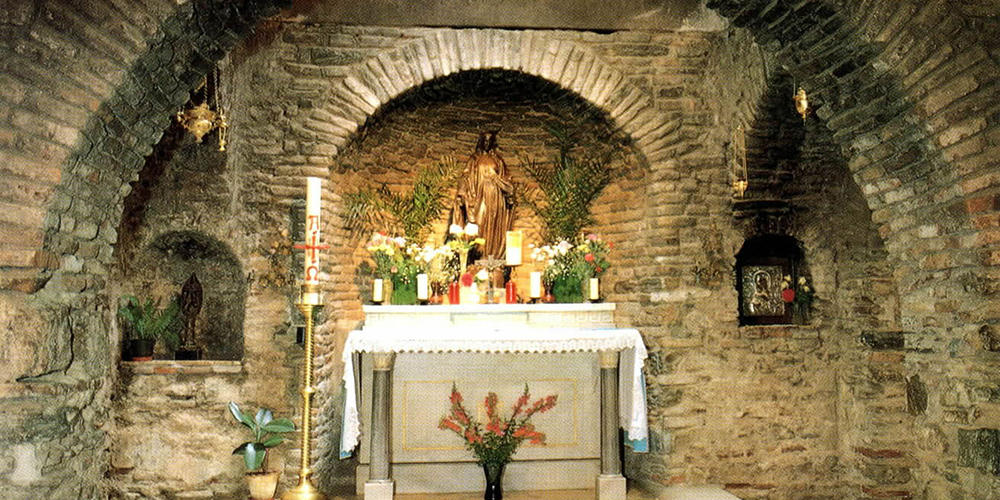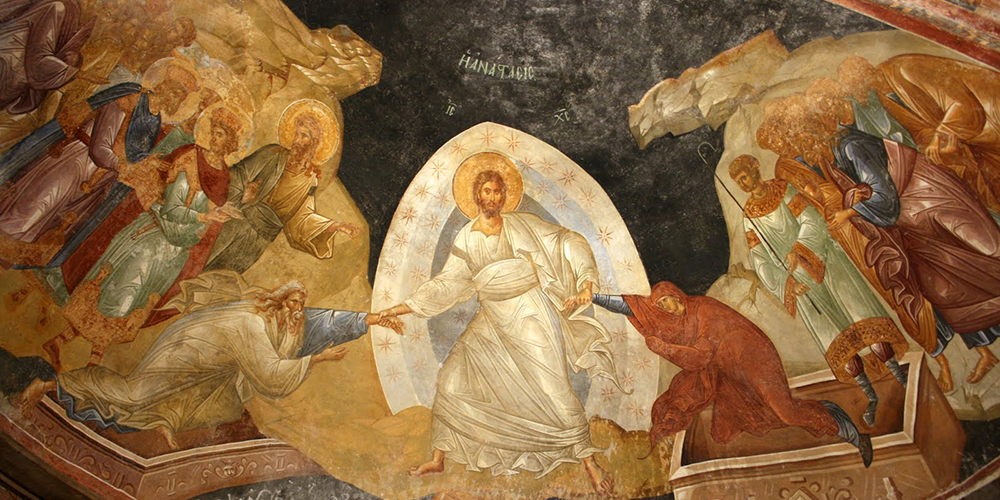BRIEFLY ABOUT THE BIBLICAL ANATOLIA
From the land of Ararat to the Seven Churches of Revelation, Anatolia has witnessed major biblical events. Old Testament prophets had lived here; New Testament apostles had worked among the local communities of Anatolia. Thus Turkey may be considered as a part of the Holy Land.
May we invite you to light a candle at the house of Virgin Mary or follow the footsteps of the Apostle Paul. Furthermore, to see the birth places of Holy Apostles and Saints such as Timothy, St. Nicholas of Myra, St. Polycarp of Smyrna and many others..
We would like to emphasize that Ebruli Tour has a very special experience on cultural routes for which we were awarded in 2010 and 2016 and may also take you to diverse destinations which are not yet so popular but deeply impressing and meaningful..

Turkey is a part of the Holy Land
If you are interested in Biblical History, whether religiously or academically, we highly recommend you to make a travel along the history of Christianity in Anatolia. These are very special tour schedules, designed for places of biblical significance through a journey across Anatolia; to trace the first Christians, the Book of Revelation and maybe the Garden of Eden!
The tours we shall design for you, may include the holy places and sites usually shown as highlights. If you wish and if you have time we can add lecturers and more to your travel program. Moreover, we would love to show you additional churches, monasteries, ruins or real worships, museums and further examples of Christianity art shaped brilliantly in various centuries but not so popularly visited yet.
>> Biblical Tours
Just contact us, tell us how long you can stay, how deep you want to go, the cities, places, details you prefer to focus on, and we shall do our best to prepare a uniq travel program for you.We shall be more than happy, the more you want to see, to learn and to experience..
HIGHLIGHTS ABOUT CHRISTIANITY IN ANATOLIA
Where did Adam and Eve live?
It was in the knowledge of all historians that two of the four rivers in the Creation account have their source in eastern Turkey. The Euphrates and Tigris Rivers flowed through the Garden of Eden (Gen. 2:13). Some traditions suggest that this garden in which Adam and Eve lived was located in southeastern Turkey.
Saint Peter and Saint Paul
Antioch was the place where the followers of Jesus were named as “Christians” for the first time in history. The Church of St. Peter (also the Grotto of St. Peter; Turkish Sen Piyer Kilisesi) is an ancient cave church with a stone facade, located just outside Antioch (modern Antakya), Turkey. This cave is widely believed to have been dug by the Apostle Peter himself as a place for the early Christian community of Antioch to meet, and thus to be the very first Christian church. Whether or not this is so, St. Peter (and St. Paul) did preach in Antioch around 50 AD and a church had been established in Antioch by as early as 40 AD. Worship services are still held in St. Peter’s Grotto, especially on the Feast Day of St. Peter and St. Paul (June 29) and on Christmas.
Seven Churches of Revelation
St. Ignatius was Bishop of Antioch after Saint Peter and St. Evodius (who died around AD 67). Ignatius, he also called himself Theophorus (“God Bearer”), and tradition says he was one of the children Jesus took in his arms and blessed. St. Ignatius is one of the Apostolic Fathers. He based his authority on being a bishop of the Church and living his life under the influence of Christ. The seven letters considered to be authentic are: * To the Ephesians * To the Magnesians * Letter to the Trallians * To the Romans * To the Philadelphians * To the Smyrnaeans * To Polycarp, Bishop of Smyrna. They are all located in West Turkey.
Ephesos/ Izmir- The house of Virgin Mary
Apostle John is reputed to have taken Virgin Mary to Ephesus, where she spent the last days of her life in a small house, known as the House of the Virgin Mary. The house survives today ( Ephesus/ close to Izmir) and has been recognized as a holy site for pilgrimage by the Catholic and Orthodox churches, as well as being a Muslim shrine. The cave of the Seven Sleepers is also located in Ephesus
Patriarchates
Two out of the five centers (Patriarchates) of the ancient Pentarchy are located in Turkey; Constantinople (Istanbul) and Antioch (Antakya).
Ecumenical Councils
All of the first seven Ecumenical Councils which are recognized by both the Western and Eastern churches were held in present-day Turkey. Of these, the Nicene Creed, declared with the First Council of Nicaea (?znik) in 325, is of utmost importance and has provided the essential definitions of present-day Christianity.
The Hagia Sophia (Istanbul)
Hagia Sophia which is an impressing museum today, was the largest church in the world for more than thousand years. From the date of its dedication in 360 until 1453, it served adral of Constantinople, except between 1204 and 1261, when it was the cathedral of the Latin empire. The building was a mosque from 29 May 1453 until 1934, when it was and was opened as a museum on 1 February 1935.
Christians in Modern Turkey
Today the Christian population of Turkey includes an estimated 45,000 Armenian Orthodox; 4,000 Greek Orthodox; 15,000 Syrian Orthodox (Syriac) Christians; 5,000 Catholics; 3,000 Protestants; and small numbers of Bulgarian, Chaldean, Nestorian, Georgian Orthodox, Anglican and Lutheran Christians. Today there are 236 churches open for worship in Turkey.

